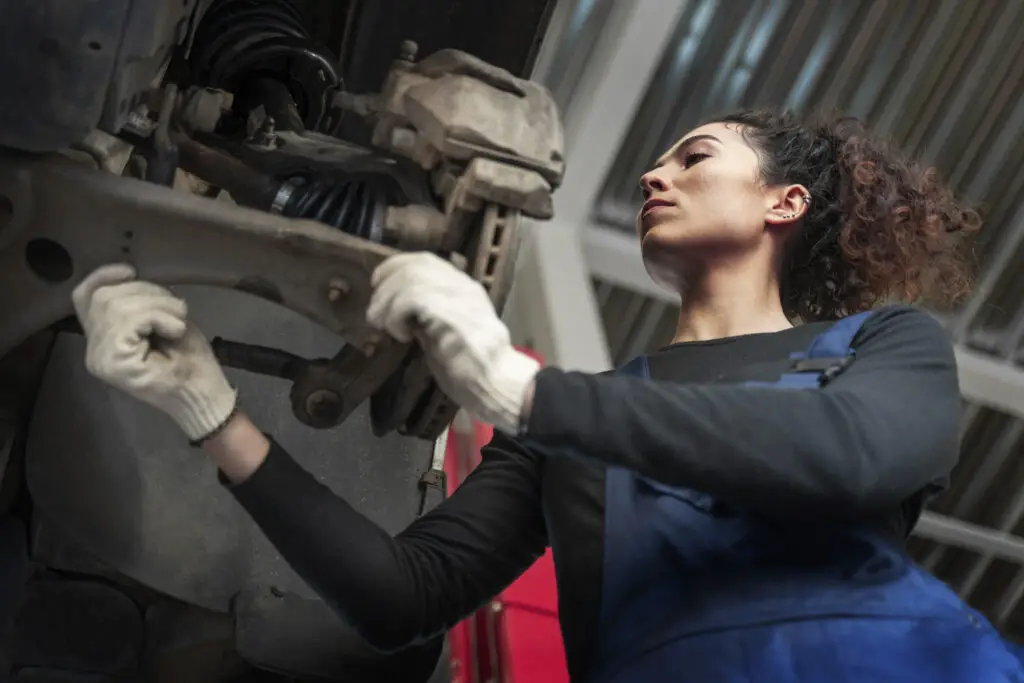When it comes to maintaining your vehicle’s braking system, one of the more intricate questions that often arises is whether brake calipers should be replaced in pairs. Unlike replacing brake pads or rotors, which are more straightforward tasks, replacing brake calipers involves some nuanced understanding of how the braking system works.
While it’s not always a hard-and-fast rule that calipers must be replaced in pairs, there are some compelling reasons to consider doing so, especially if you want to maintain optimal braking performance and vehicle safety.
Understanding Brake Calipers and Their Role
First, let’s briefly recap what brake calipers do. The brake caliper is a crucial component of the disc brake system, housing the brake pads and pistons. When you press the brake pedal, hydraulic pressure forces the pistons within the caliper to press the pads against the rotor, generating the friction necessary to stop the vehicle.
Over time, calipers can wear out or become damaged due to corrosion, leaks, or sticking pistons. These issues can cause uneven braking or diminished braking performance, which makes their proper function critical to your car’s overall safety. But when one caliper fails, should you only replace the faulty one, or should both be replaced?
Should You Replace Brake Calipers in Pairs?
Technically speaking, it’s not mandatory to replace brake calipers in pairs. However, replacing them in pairs can ensure balanced braking performance across both sides of your vehicle. Here’s why:
- Uniform Wear and Performance: Replacing calipers in pairs ensures that both sides of your car have the same wear level and brake force. A new caliper on one side may function slightly more efficiently than an old, worn-out caliper on the other side. This imbalance can cause uneven braking, which may result in pulling to one side during braking and, in severe cases, create a safety issue.
- Hydraulic Pressure Balance: Brake calipers operate by hydraulic pressure, so ensuring both calipers are in similar working condition is key to maintaining consistent brake pressure. An older caliper may not apply the same force as a new one, potentially causing the vehicle to pull to one side under heavy braking.
- Longevity and Cost-Effectiveness: While you can replace only the faulty caliper, replacing them in pairs can actually be more cost-effective in the long run. If one caliper has failed, the other may not be far behind, and replacing both can save you the labor costs and downtime of having to go through the replacement process again shortly after.
- Rotor and Pad Wear: A faulty caliper can lead to uneven wear on your brake pads and rotors, which may eventually cause you to replace those components prematurely. Installing calipers in pairs ensures uniform pad and rotor wear, prolonging the life of those parts.
Situations Where Replacing Only One Caliper Might Be Acceptable
While replacing both calipers is generally the recommended approach, there are instances where replacing just one caliper may suffice:

- Caliper Condition: If one caliper is damaged or defective due to something like external trauma (e.g., hitting debris), and the other is in perfect working order, you may choose to replace just the damaged caliper.
- Age of the Vehicle: If your vehicle is relatively new and one caliper fails prematurely, you may not need to replace the other. In newer cars, the wear difference between calipers is likely to be minimal.
- Budget Constraints: Replacing two calipers at once can be more expensive, and while safety should always be a priority, it’s understandable that budget constraints can sometimes dictate car repairs. If you need to replace only one caliper, just make sure to monitor the other side closely and stay on top of regular maintenance checks.
What Happens If You Don’t Replace Calipers in Pairs?
Failing to replace brake calipers in pairs might not result in immediate issues, but it can cause longer-term problems with your braking system. Here are some potential risks:
- Uneven Braking: As previously mentioned, having one new and one old caliper can result in uneven braking, where one side of the car brakes harder than the other. This can make your car pull to one side, particularly when braking at high speeds.
- Premature Wear on Brake Components: Uneven braking force from mismatched calipers can cause uneven wear on your brake pads and rotors. This not only reduces the lifespan of these components but also compromises your braking performance over time.
- Hydraulic Imbalance: Inconsistent hydraulic pressure between the two calipers may affect overall braking efficiency, particularly under heavy loads or in emergency situations.
Conclusion: Better Safe Than Sorry
While it’s not absolutely required, replacing them in pairs is highly recommended for maintaining balanced braking performance, ensuring even wear on your brake components, and avoiding potential safety issues. If one caliper fails, it’s often a sign that the other isn’t far behind, so replacing both at once can save you headaches and costs down the road.
If budget allows, replacing calipers in pairs will keep your vehicle’s braking system operating smoothly and give you peace of mind every time you hit the brakes.
Discover more from Chikwem
Subscribe to get the latest posts sent to your email.